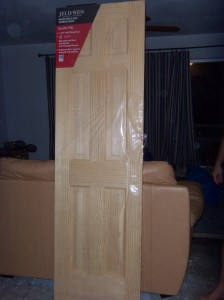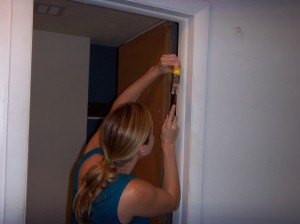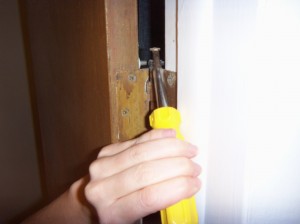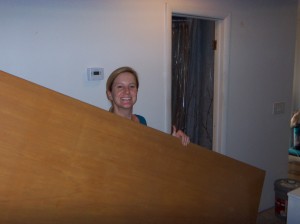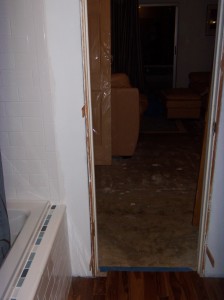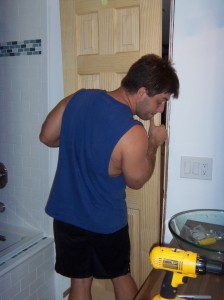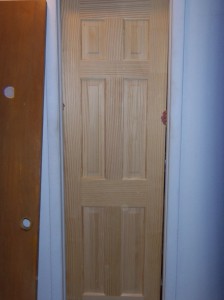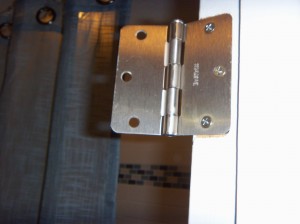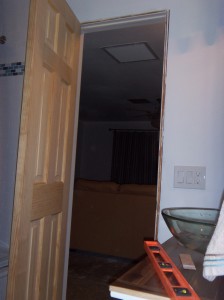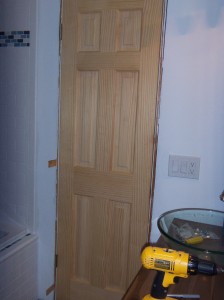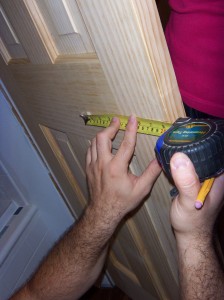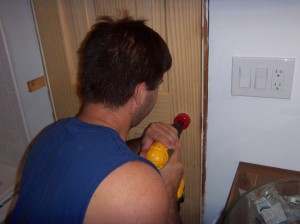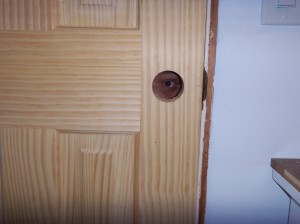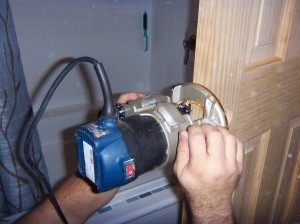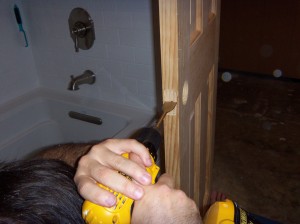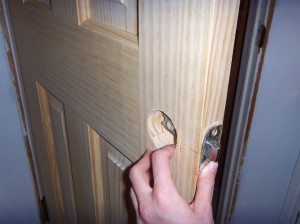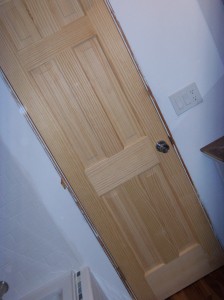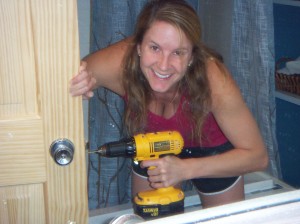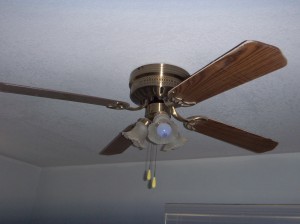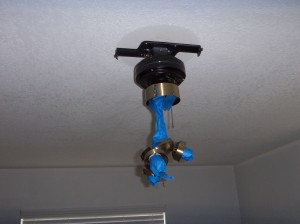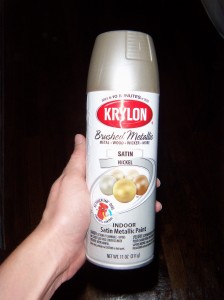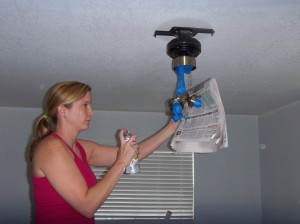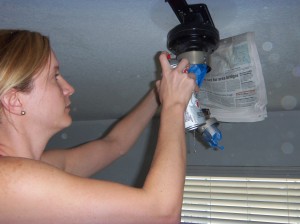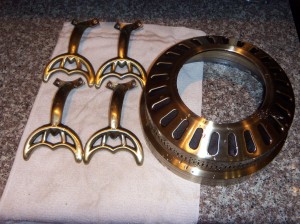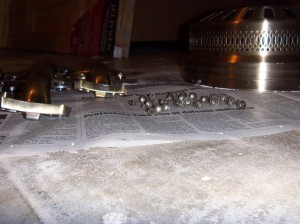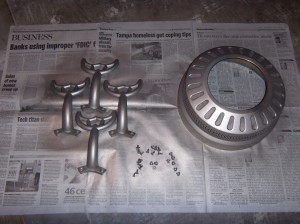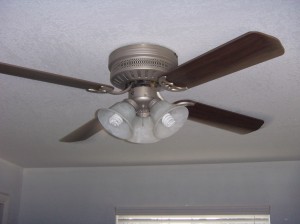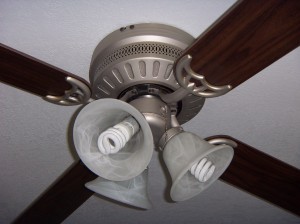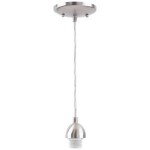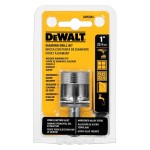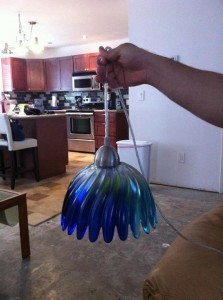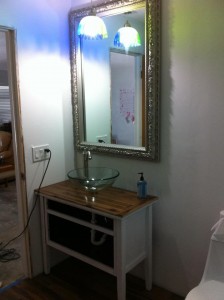Bless you ReStore. Bless you very much. You have provided us with hours of entertainment, and several key purchases in our attempt to renovate our home. We have tried to keep the karma flowing by donating any extra supplies that we have after a big job. Or a small job.
SPEAKING of small jobs – let’s talk about the newly renovated bathroom. You have read much and seen much of the work we’ve done. However, one issue remains: the bathroom door opens into the living room. When there’s just one person in the house, no big deal. When it is The Girl and I in the house, still not much of a big deal. When there is company, over-night guests, or a glow-stick, light-switch, rave going on in the house, the door presents an issue.
The door is hollow, and without getting unnecessarily graphic, a hollow door does not do a very good job at keeping sounds or odors in. Clearly the concern here is being forced to listen to someone splash about in the tub, or having to smell someone’s aromatic candles being burned. Ahem.
So, The Girl and I did a little Saturday morning shopping at the ReStore. We managed to find a 24 inch wide, paneled, solid core door that was still in the factory wrapping for TEN DOLLARS. You may be asking yourself, “self, is that a good deal?”
For comparison, here is the same door, advertised at Home Depot. (Update: the link to the exact same door stopped working, as I guess they discontinued it, so it is now linked to a comparable composite pre-primed door, which is actually cheaper than the unprimed slab!)
Before anyone could move our door to a more expensive part of the ReStore, we grabbed it and sprinted to the cash register. Ok, fine – we had the store employee schlep it over to the register, while we browsed through the store for another twenty minutes. Whichever story you enjoyed more, the point is we had ourselves a sweet door, and a perfect home for it. On the other hand, The Girl and I were both nervous about trying to hang a door because we had heard horror stories about trying to trim a solid core door to the right size, and getting it to hang straight and level.
Step 1: remove old and busted. Tools required: One screwdriver, one hammer, one The Girl (not included).
The first step was pretty simple. No major issues, no power tools necessary, just pop the pins from the bottom of the hinge (I used a hammer and a nail to do it), and then remove the door. Then unscrew the old hinge from the door frame.
Step 2: make sure the door frame is square. Tools required: wood shims, level.
Fortunately, our door frame was more or less square. We needed a little bit of shim work to make it right, but most frames should be in better shape than ours was.
Step 3: fit the door and measure for the new hardware. Tools required: arms and a pencil.
We started by fitting the door from the bathroom side, and putting the new hinges into place.
Then we lifted the door, still in the frame, so that the top of the door fit how we wanted at the top of the frame. We made marks on the door where the hinges needed to be attached, and then took the door back out of the frame. Then we opened the hinges to 90 degrees so we could screw the hinges to the door. We lifted the door back up so that the lines that we just drew lined up with the hinges, pre-drilled the holes for the screws to keep the door from splintering, and attached the hinges to the door. (This whole process required four hands, thus no pictures.) Then it was time for the moment of truth – closing the door. Imagine our surprise when the door closed, smoothly, and lined up perfectly with the door frame. It’s not supposed to work like this. It NEVER works like this.
Step 4: drill the hole for the door knob and the door latch. Tools required: 2″ hole saw, 1″ wood drilling bit, power drill, and power router.
Scary part. So far, we hadn’t actually altered the door. Anything that went wrong up until this point was pretty fixable. Now we would be putting holes in things. Putting holes in things is easy – fun even. It’s much more difficult to do it in a precise manner, knowing that if you mess it up then the door is ruined. Pretty sure I was mumbling Queen’s “Under Pressure” while I gathered all the tools for this step.
Side note: in most jobs we tackle around the house there is some measuring and mathification. I’m pretty good at math. I like to do long division in my head during boring car trips – no joke. But, despite my best efforts, I’m not a calculator. And measuring isn’t necessarily my strong point. I do it, and I get it right most of the time, but I have much more fun cutting stuff and screwing stuff together and sanding stuff, so I tend to spend less time and energy focusing on the measuring.
So, there I was, measuring and mathificating in my head: “The old hole was only 1 3/4 inches wide, and the right edge of the hole was 1 inch away from the edge of the door, so if my new hole is 2 inches wide, then the center of the new hole should be 1 7/8 inches from the door frame. But if the OTHER train leaves the station ten minutes later going twice as fast, when will they meet?”
I took two Aleve and started over. Ten minutes later, I was sitting on the ground inside the bathroom with The Girl intently staring over my shoulder as I drilled the 2 inch hole into our very pretty and very square door, praying that I wasn’t screwing it up.
When I was finished, we had this:
Then, I had to use the router to cut out a section for the latch plate. The latch plate has to be recessed into the side of the door for it to work properly. I have regularly told The Girl that the router is PROBABLY the most dangerous power tool we have because it’s a spinning blade, without a safety shield of any kind, and it’s hand-held. That being said, we set the depth of the bit by using the old door as a frame of reference, then I sat down with the door between my knees and very slowly cut out the recess for the latch plate.
The last step was to use the 1 inch wood-boring bit to drill sideways through the door until I hit the other hole that was cut for the door knob. The only concern here is to make sure that you drill as straight as possible because there isn’t much room for error on either side of the door. If you start drilling at an angle, there is a good chance you will come out of the side of the door, or that the hardware won’t line up with the door knob. In our case, I managed to drill the hole in a relatively straight line through the side of the door. The planets may never align so perfectly again.
Here’s the door with the knob and the latch assembled and installed:
It’s pretty dang pretty, and it is almost perfectly level, and it closes AND opens. Here is The Girl pre-drilling holes for the latch plate screws:
Unfortunately, those folks in the living room area will no longer get the benefit of hearing bath splashes, or smelling the burning candles coming from the bathroom, but The Girl assures me this is a good thing.

